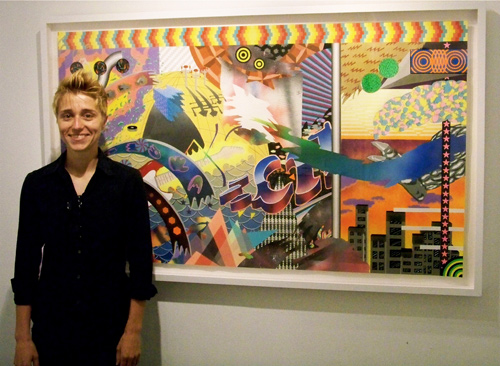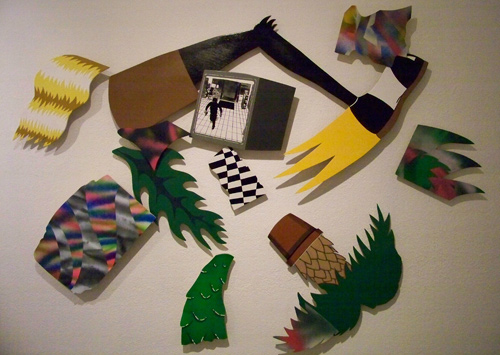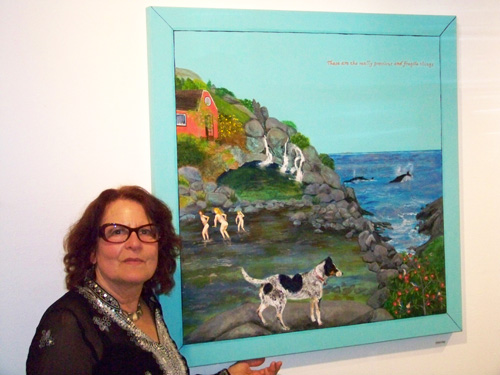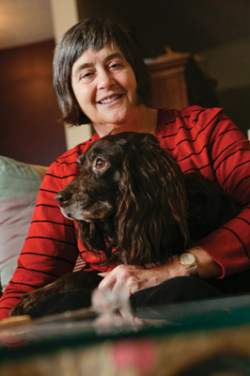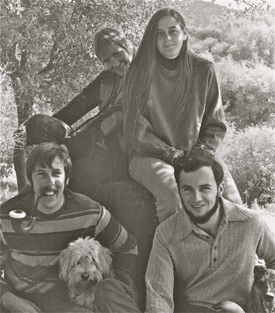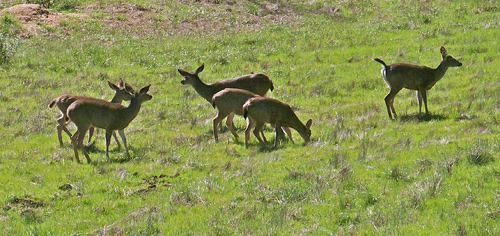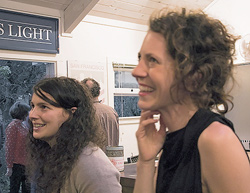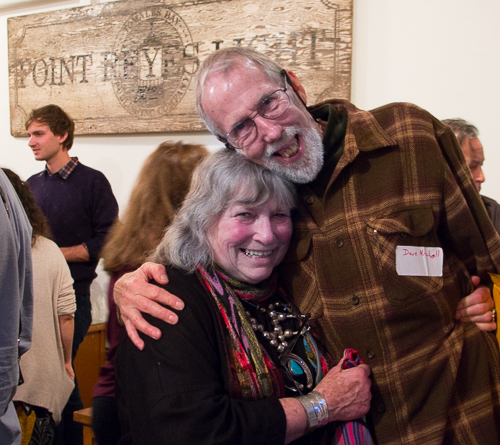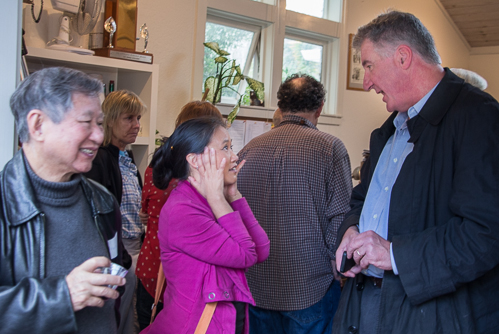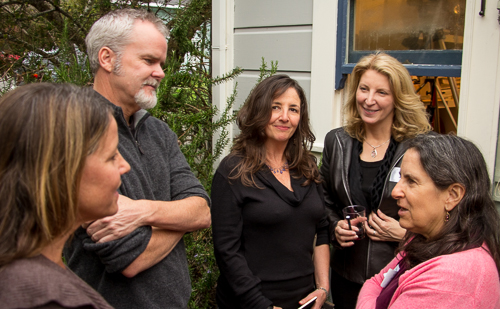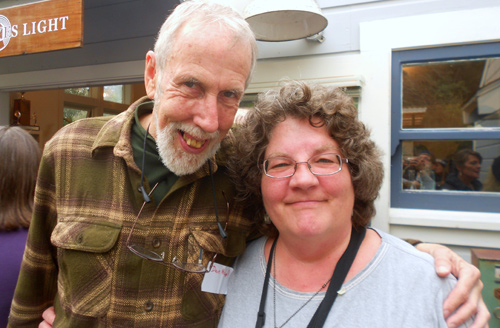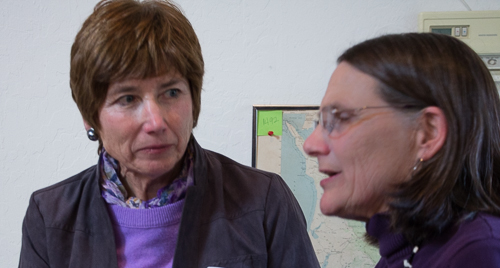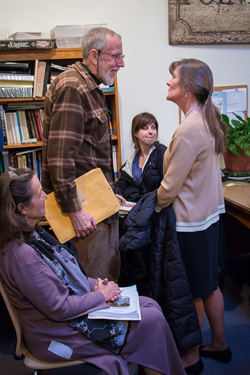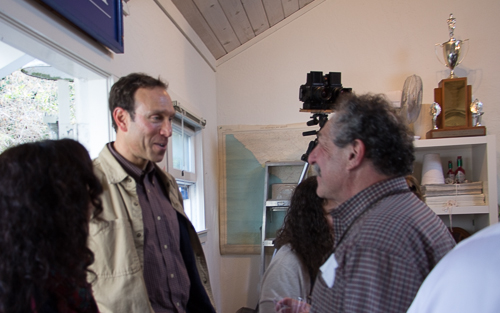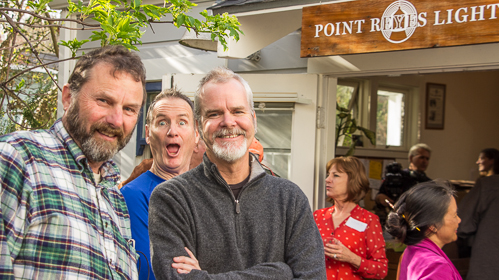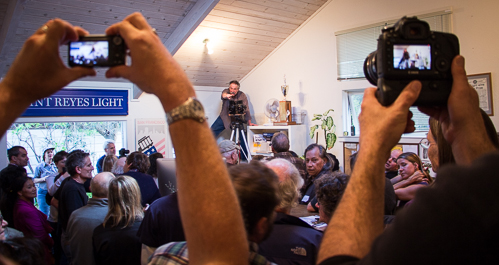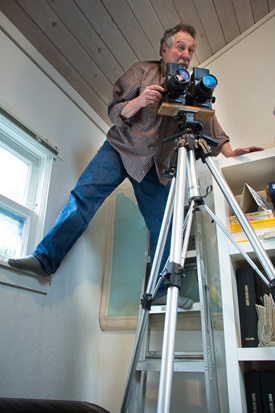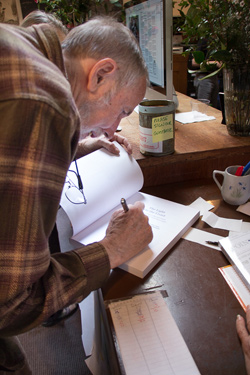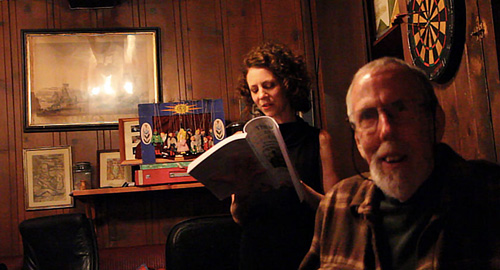Mon 31 Mar 2014
Gallery Route One exhibiting whimsical art with messages from three women
Posted by DavidMitchell under Point Reyes Station
[5] Comments
Gallery Route One in Point Reyes Station on Sunday held an opening reception for a three-woman exhibition of highly individualistic, often whimsical art. The crowd that showed up loved it.
Jessica Eastburn of Oakland, recipient of the gallery’s first Fellowship for Young Artists award, hung an exhibit titled “Mutatis Mutandis,” which is a commentary on today’s rampant consumerism. This work by Jessica is called “Trouble with the Sweet Spot.” _________________________________________________________________
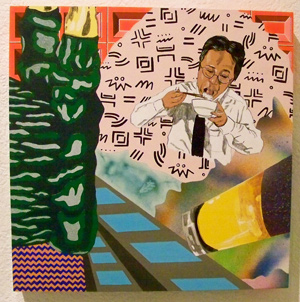 Jessica calls this picture “Pistols at Dawn.”
Jessica calls this picture “Pistols at Dawn.”
Given the current corruption and gun-dealing scandal involving State Senator Leland Yee and gangster Raymond “Shrimp Boy” Chow, I asked the artist whether she had Shrimp Boy in mind when she created Pistols at Dawn.
Jessica told me with a laugh that she painted the picture before the scandal broke.
________________________________________________________________
“Bad Vibrations: Middle Class,” meanwhile, includes a crime in progress. The picture in the middle shows what appears to be a security-camera video of an armed robber fleeing a convenience store. _________________________________________________________________
 Former West Marin resident Lauri Studivant, is displaying an exhibit of “Applied Junk Art.”
Former West Marin resident Lauri Studivant, is displaying an exhibit of “Applied Junk Art.”
Lauri, who now lives in Siskiyou County, once worked for the County of Marin organizing West Marin’s recycling program.
These days she collects litter and turns it into art.
Here Lauri (right) stands with her sister, Linda Sturdivant of Inverness Park, in front of a nine-foot-high, three-foot-wide hanging made of waste paper. It’s appropriately called “Scraps.”
______________________________________________________________________
Lauri’s free-standing statute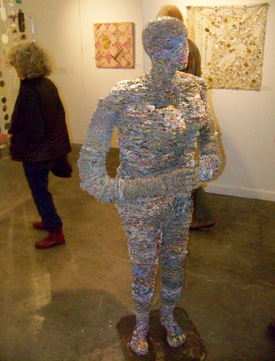 titled “Picking Up the Pieces” was assembled from 33,246 jigsaw-puzzle pieces.
titled “Picking Up the Pieces” was assembled from 33,246 jigsaw-puzzle pieces.
Her sister Linda said it took Lauri a year to complete this statue of a woman.
_______________________________________________________________________
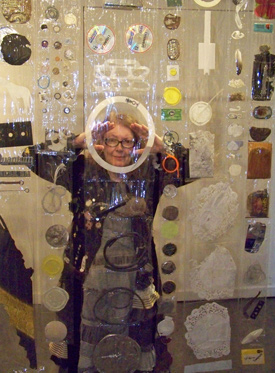 Lauri looks through a circle of clear plastic in one of her hangings made from discarded items.
Lauri looks through a circle of clear plastic in one of her hangings made from discarded items.
________________________________________________________________________
The artist Vickisa of Bolinas, a long-time member of Gallery Route One, displayed the most-colorful art in the exhibition. The artist told me this painting, “Precious Things,” is her favorite among the pieces she has in the show. ________________________________________________________________
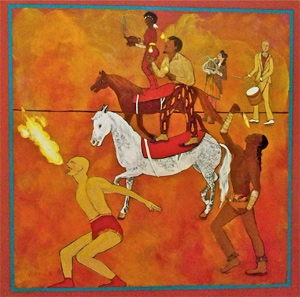 A circus-like scene painted by Vickisa includes a fire eater, a sword swallower, musicians, and acrobats on horseback.
A circus-like scene painted by Vickisa includes a fire eater, a sword swallower, musicians, and acrobats on horseback.
____________________________________________________________
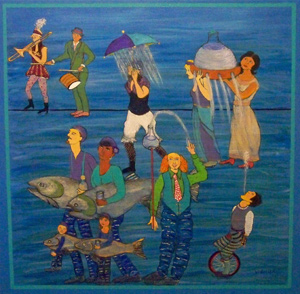 Another whimsical, circus-like scene, comes complete with musicians, a clown and a unicycle rider.
Another whimsical, circus-like scene, comes complete with musicians, a clown and a unicycle rider.
My favorite character in the painting, however, is the woman being drenched by rain falling from her umbrella which she is holding over her head on a clear day.
_________________________________________________________________
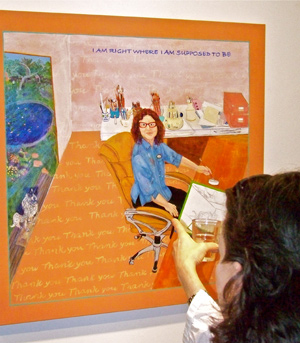 A guest admires Vickisa’s painting, “I Am Right Where I Am Supposed to Be.”
A guest admires Vickisa’s painting, “I Am Right Where I Am Supposed to Be.”
The self-portrait shows her painting in her studio as her dog looks in the window.
___________________________________________________________________
 Vickisa owns a rescued cattle-dog mix named Rosebud.
Vickisa owns a rescued cattle-dog mix named Rosebud.
_________________________________________________________________
 Vickisa’s fondness for her dog can be seen in the number of times Rosebud shows up in her paintings.
Vickisa’s fondness for her dog can be seen in the number of times Rosebud shows up in her paintings.
________________________________________________________________
 Usually, but not always, dogs add a bit of humor when they appear in Vickisa’s art.
Usually, but not always, dogs add a bit of humor when they appear in Vickisa’s art.
A couple of weeks ago, Vickisa told The West Marin Citizen that through her work she tries to show that art does not have to be a product of angst.
In her art, she said, she likes to demonstrate that art can also reflect joy and quiet contentment.
________________________________________________________________
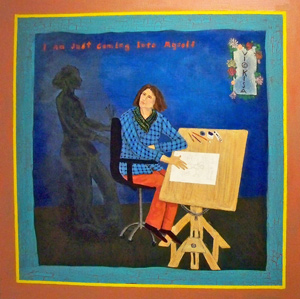 “I Am Just Coming into Myself” is the title of this portrait.
“I Am Just Coming into Myself” is the title of this portrait.
The artist calls her exhibit “The Vickisa Experience.”
The Citizen, referring to her “hard-won contentment” [the paper’s words, not hers], quotes Vickisa as saying she is “really pretty happy now.”
One thing that probably makes her happy is that her art is fetching good prices.
Vickisa’s pieces in the exhibition ranged in price from $250 for prints to $1,600 and $1,800.
Gallery Route One is open every day but Monday from 11 a.m. to 5 p.m.
The current exhibit will last through Sunday, May 4. __________________________________________________________________

